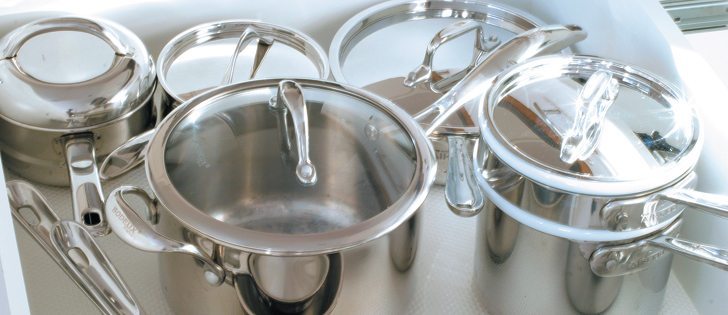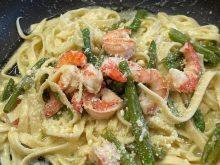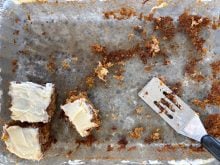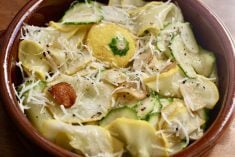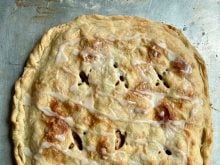It’s a new year and a perfect time to organize the pantry, cold room and freezer by replenishing food stocks and cleaning out the old. A well-stocked kitchen is key to impromptu and easy meal preparation.
I keep chicken carcasses, beef and lamb bones along with cuttings of carrots, celery and onion in freezer bags for a day of making stock. Pull them out and do it today. Your stocks can simmer while you continue with cleaning. If you keep odd bits of bread, make croutons and bread crumbs.
Read Also

Know what costs are involved in keeping crops in the bin
When you’re looking at full bins and rising calf prices, the human reflex is to hold on and hope for more. That’s not a plan. It’s a bet. Storage has a price tag.
Freezers free of ice buildup use less electricity. Begin by removing all food, turn the control dial off and leave the door open to melt the ice, usually about 30 minutes with an upright freezer.
Remove water and clean the inside with warm soapy water, including shelves and the outside of the freezer.
Pull a piece of paper through the door while it is closed to make sure that the door gasket seals well. The gasket should be replaced if the paper pulls through easily. Wash and dry the gasket carefully.
Remove dust from the compressor and coils underneath the freezer.
Turn the freezer back on and then replace food and organize by food groups so they are easy to find.
Put a fresh box of baking soda inside to control odors.
The proper temperature setting for a freezer is 0 F (-18 C). Keep a thermometer in the freezer to monitor the temperature.
Rethink where and what is in your easy-to-reach cupboard space and arrange by frequency of use. For example, I use my pressure cooker a lot but have always kept it in the basement storage area.
My Chinese steamers are in the cupboard but are difficult to pull out. I would use them more if they were easier to access.
Match food storage containers with their lids and discard extra lids. Pots stored with their lids on rather than stacking are so much handier to use. Stack only pans that don’t have lids.
Line the bottom of the drawer with a rubberized liner so that the pots and pans don’t slide around when the drawer is pulled open.
Add inserts to prevent drawers from being one mass of gadgets. Use baskets, cutlery trays and wire baskets and declutter countertops.
Next, clean kitchen cupboards and main floor pantry. Remove all items cupboard by cupboard, and wash shelves with warm soapy water.
Making a beverage centre makes perfect sense. Keep all coffees, hot chocolate, teas and gadgets in a handy spot that is near the coffee maker.
Make another spot to store all the baking ingredients. Spices, herbs, and salts are another natural grouping. Grouping pasta with rice and grains makes sense in my kitchen.
Check the freshness of your spices and vegetable oils and expiry dates on all packaged and canned goods. Check for duplicates and empty packages. As well, discard or donate to charity any unopened packages that you never use or don’t like.
Ground spices should be used within a year. Dried parsley and basil are low in flavour. Whole spices have a shelf live of up to five years. Vegetable oils can be kept until they turn rancid. The smell will be acrid and unappealing. Put half an apple or a fresh bun in a bag of dried out brown sugar to rehydrate it.
Pasta, dried beans and lentils keep almost indefinitely. Store in a cool, dry place for best results.
Honey and corn syrup can be kept until the flavour or appearance becomes unappealing.
Flour has an expiry date. It is best if used within one year of milling. Some companies put dates on their packaging.
Arrange items in the pantry by food group rather than by size. Seldom used items should be on the top shelf, most often used on the middle shelves and children’s items on the lower shelves so they can reach them. Use containers with tight fitting lids for opened packages. Make a shopping list for items that are running low.
The refrigerator freezer compartment and interior are cleaned in the same way as the freezer. Discard spoiled food.
Check expiry dates on all condiments and discard as necessary. Get serious with all those bottles of salad dressing, mayonnaise and ketchup. Do you really need all of them?
Carefully clean rubber gaskets on doors. Remove all shelves and drawers and wash. Do not put cold glass and plastic pieces in hot water. Remove the grill at the bottom of the refrigerator and clean out the dust bunnies. Check the water filter and replace if needed.
The proper temperature setting for a refrigerator is 35-38 F (2–3 C). Bacterial growth is more active above 40 F (4 C) and food freezes at 32 F (0 C).
Return wrapped or covered food to the refrigerator. Organize so the healthy snacks such as cut vegetables and cheese, are on the bottom shelf within easy reach.
Don’t forget to clean under the sink. A plastic storage unit with drawers is ideal to organize scouring pads, silver polish, cleaning rags and rubber gloves.
Clean and organize the cold room by organizing jars of preserves and storing empty canning jars on a separate shelf. The recommended storage time for home canning is one year. After that, the flavour and appearance diminishes. The lower shelves are cooler in a cold room.
Meal planning will be so much easier once the kitchen and food storage areas are clean, organized and stocked.
You might even be inspired to carry on throughout the house.
Sarah Galvin is a home economist, teacher and farmers’ market vendor at Swift Current, Sask., and a member of Team Resources. She writes a blog at allourfingersinthepie.blogspot.ca. Contact: team@producer.com.

